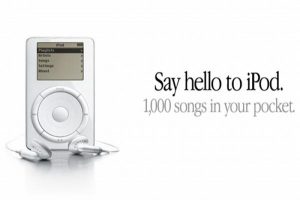You drive into any ghetto in the USA and you can find an 8-year-old kid selling crack on the street corner. The shoes he chooses to wear are usually the most expensive Air Jordan sneakers.
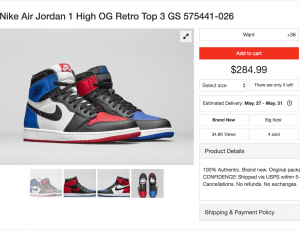 But the kid is 8.
But the kid is 8.
That means he was born in 2009.
Michael Jordan retired in 1993, 16 years before the kid was born.
Odds are he’s probably never even seen a single video of Michael Jordan playing basketball.
Why then, are these shoes so relevant to him that he would spend $280 on a pair?
Answer: Because everyone else is doing it.
This is great marketing. The value to the kid comes from society, not the fact that he has any awareness of Michael Jordan.
Great marketing works on music and the price of music as well, more on that in a second.
Everybody in the industry complains about how there is no more value in recorded music.
They also bitch about the fact that consumers don’t know good sonic quality from poor sonic quality. They seem perfectly content to settle for crappy sound. If they did know the difference and they all made their purchase decisions on the actual quality of audio, they never would’ve bought CD’s to begin with.
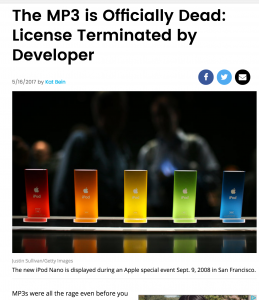
Last week the industry ditched MP3’s for AAC’s both of which sonically don’t come close to competing with WAV files which pale in comparison to analog.
Consumers don’t purchase music based on the quality of the file for the quality’s sake.
It’s obviously about the song but we can be smarter. This doesn’t have to be negative.
I was listening to the hosts of The Music Biz Weekly Podcast discuss Pono Music’s plans to become a high-resolution streaming service. Every one of their points was spot on (I love this podcast) but they missed the boat one very important fact; consumers don’t shop based on value.

We all like to think we do but we don’t.
We all shop by comparison.
The only reason music fans glommed onto the CD, a format quality which was exponentially inferior to vinyl, was because they were told to.
Equally so for the MP3. Steve Jobs sold a fancy new device called the iPod which could hold “1,000 songs in your pocket†but only if they were in an MP3 format.
We loved 1,000 songs in our pocket enough to care less about the audio quality.
Yes, the sonic difference between digital and analog is certainly more apparent with dynamic music like jazz and symphonic music.
Modern music is so compressed only experts can tell the difference.
It’s also true that most consumers these days are listening to their music through ear buds which are drastically subordinate to a larger powered speaker with regards to the frequency spectrum.
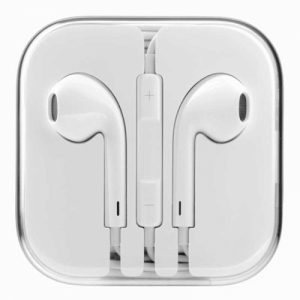 So what?
So what?
It doesn’t matter.
The argument that all these factors are the reason that consumers won’t adopt better quality audio is hogwash.
It’s true, consumers can’t hear the difference!
It’s not as immediately apparent in the mind of the consumer as a brand-new car vs at rusted out piece-of-crap, although this would be an accurate sonic metaphor.
They can’t distinguish between superior and inferior sound quality because somebody (like Steve Jobs, for instance) never communicated the difference, made it cool, gave them a sufficient reason to purchase, and charged them more for the better quality.

Music used to cost $3.00 per song. Tom Petty’s Damn the Torpedoes came out in 1979 and cost $8.00. Put that into an inflationary calculator and that $8.00 in 1979 is worth around $29.82 today’s dollars.
But Petty’s latest release, Hypnotic Eye, can be purchased on iTunes for $10.99 just like every other record.
This is because one man, Steve Jobs, said so.
If consumers went down in price because they were told to, we can certainly go up in price. The trick is to affect the consumer mind to believe it’s worth it.
NOT ROCKET SCIENCE.

Too many industry experts naturally and understandably want to attach the “worth†of the format to a tactile, tangible value. Just listen to that Music Biz podcast and you hear all the intelligent arguments.
Herein lies the mistake.
I’ll explain.
Pono Music was the self-proclaimed “pet project†of Neil Young that he initially funded (at least partially) by a Kickstarter campaign. Pono Music offered (for lack of a better term) “Super-HD†192k, 24-bit audio files for $3.00 per song.
This was a genius idea, in my opinion, right up until Young went old school and required you to purchase a separate, expensive, clunky device to play the unique audio file required to deliver the Super-HD file.

This was an incredible missed opportunity.
The audiophile market has always been extremely small and certainly NEVER in the mainstream.
When vinyl was the ubiquitous format for music, there were sonic enthusiasts who would purchase insanely priced speakers and amplifiers to interpret their favorite recordings at a higher fidelity level than any normal market equipment.
 During the CD age, we had SACD formats which also provided high-resolution audio but you had to purchase a $3,000 – $20,000 CD player to hear it.
During the CD age, we had SACD formats which also provided high-resolution audio but you had to purchase a $3,000 – $20,000 CD player to hear it.
This was inconvenient obviously for the prohibitive cost, but also because the SACD wouldn’t work in the car.
Therefore, only audio elitists would spend that kind of cash to listen to the superior sound quality because they could hear the difference.
Â
That previous statement is partly true. I personally know more than a few dudes who only had all the hottest audio products because someone told them they were the hottest audio products and they had the money to spend and people to impress.
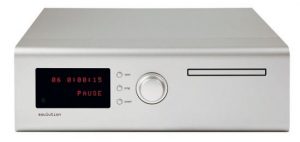 What Neil Young and Pono Music should have done was taken the hint from Gillette; GIVE them the razor and sell them on the blades.
What Neil Young and Pono Music should have done was taken the hint from Gillette; GIVE them the razor and sell them on the blades.
Right now, the music industry has the capability to make everyone feel like and want to be an audiophile, or at least expand that market exponentially, while returning the value of recorded music to its original price at the same time.

See how they show you it’s worth it?
The industry can do this because, for the first time, it can be convenient for the consumer to actually be an audiophile if we would just be smart enough to make it that way.
For all the attention to detail that Jobs and Apple are known for in their superior quality products, they completely failed by installing the Quicktime audio player in the iTunes software.
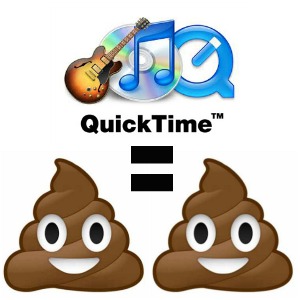 There is not a bigger piece of crap out there. Total disaster.
There is not a bigger piece of crap out there. Total disaster.
If you’ve ever listened to a stereo mix of a song in a recording studio as it plays in Pro-Tools (or any DAW) and then uploaded that same mix into iTunes and listened again, you know exactly what I’m talking about.
It’s like somebody hung some thick wet towels over the tweeters. It’s horrific! (Seriously, what Quicktime family member married someone from Apple to allow this to happen?)
For this reason, there is a company called Amarra Music Software that makes a plugin for iTunes which disengages the Shitateous Quicktime player and sends the signal through their high-resolution audio player.
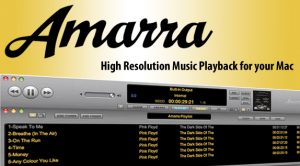
The difference is astounding.
Everything is digital now, and outside devices are dead (even the iPod isn’t around anymore).

Why doesn’t the record industry GIVE consumers an Amarra-like app for free? This app would allow consumers to play all their normal audio files plus the 192k 24-bit high-resolution files.
If we tell them the audio is better, and it truly is, they will purchase it provided it will work everywhere.
Simple.
I’ve done it, by the way. I have proof this will work.
We tried a psychological marketing experiment on the Bailey James’ fans.
Follow me on this.
Everyone on Bailey’s list got there by downloading a free MP3 file of her latest single (at the time).
We sent out an email with the subject line “I have another gift for youâ€. In this email, Bailey explained in a video that she needed their opinion on something. She talked about how there was all this chatter regarding high-resolution audio with Jay-Z and Tidal, how HD Radio says they broadcast higher quality than XM-Sirius Satellite Radio (it’s true), and you can get high-resolution streams on the premium Spotify subscription.
Bailey then offered her stamp of approval and told them what to think (intentional neuro-linguistic programming here) by explaining that she’s been in the studio enough to tell the difference between an MP3 file and an HD file (HD file was simply a WAV but we branded it with a term that consumers would immediately understand). She illustrated how she could hear the bigger low-end and smoother highs when she cranks the song.
 Then, without asking for anything, she made it about them. She stated, “It doesn’t matter what Jay-Z, HD Radio, Premium Spotify users, or I think, it matters what YOU think.†She told them that she had attached a free HD download of the same single they already have. She was giving this to them because she wanted their feedback.
Then, without asking for anything, she made it about them. She stated, “It doesn’t matter what Jay-Z, HD Radio, Premium Spotify users, or I think, it matters what YOU think.†She told them that she had attached a free HD download of the same single they already have. She was giving this to them because she wanted their feedback.
The only thing she requested in return was for her fans to CRANK the 2 files back-to-back and reply to her via social media as to which one they felt was better.
As you can easily imagine, EVERYONE thanked her for the second free track and clearly favored the HD audio.
Because we told them to.
When Bailey’s EP was released, we offered the normal downloads you’d expect on her web store, but we also offered HD (WAV file) downloads of each song as well as the complete EP.
 We charged the standard .99 cents for an MP3 file but $1.49 for an HD single.
We charged the standard .99 cents for an MP3 file but $1.49 for an HD single.
Over 80% of all the music sales in Bailey’s store were HD audio files.
We told them it was cool and got them to tell each other that it’s cool. That made it cool.
If we all purchased our products solely on price, functionality, and real value, we’d all drive the same cars, wear the same shoes, and tell time on the same watches.
But we don’t.
We shop by comparison.
That kid selling crack in the ghetto wears $280 Air Jordans because he thinks it’s cool. He thinks it’s cool because everyone he looks up to is wearing them.
“Nothing attracts a crowd like a crowd.†– P.T. Barnum
If it’s convenient, and it’s perceived to be cool because “everyone is doing it†then we can sell Super-HD audio for $3.00 per song.
No, they won’t be able to tell the difference, especially on super compressed pop music but that DOESN’T MATTER.
They will feel like a baller for only $3.00. It’s not that much money.
What would music sales look like in 2017 if every label re-released Super-HD audio files of all the best-selling records?
Oh, and you know what makes those Super HD files sound even better?
A killer expensive set of powered speakers, or headphones, amplifiers, etc., but I digress.
Stay
In
Tune.
If you found value in this article, please SHARE it and COMMENT


